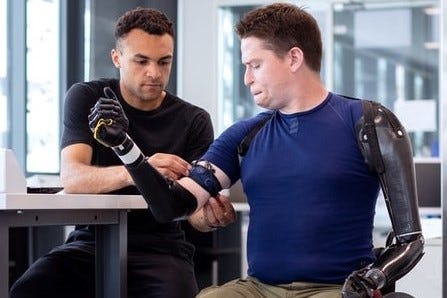# Embracing Neurodiversity: Understanding Different Realities
Written on
Chapter 1: The Nature of Perception
Understanding our perceptions is crucial to grasping how individuals with different backgrounds view the world. For instance, fish perceive their environment through a distinct lens, tailored for underwater existence. In contrast, human vision is adapted for life on land. The way light refracts in the ocean differs significantly from how it behaves in a fishbowl. Thus, when a fish looks out from its bowl, its perception is inherently distorted.
Both humans and fish can acknowledge the existence of the fishbowl and the life within it, yet their experiences of reality diverge based on their respective environments. This situation illustrates how two realities can coexist without one being more valid than the other; they are simply shaped by individual perspectives.
"In the framework of model-dependent realism, questioning the reality of a model is irrelevant; what matters is its alignment with observable evidence." — The Grand Design by Stephen Hawking and Leonard Mlodinow.
Model-dependent realism transcends scientific theory; it has profound implications for accessibility, neurodiversity, and disability. Individuals from marginalized backgrounds often experience the world differently, a reality that those outside their experiences may fail to comprehend.
People frequently assert their own interpretations of reality as the absolute truth, dismissing alternate viewpoints. Yet, model-dependent realism highlights that our perceptions are influenced by personal experiences. The fish sees one reality, while the human sees another.
Section 1.1: The Disconnect in Society
There is a significant gap in awareness and understanding regarding the neurodiverse community. This disconnect, compounded by a lack of acceptance, leads to discrimination, inequality, and barriers for individuals with disabilities.
Information is a catalyst for change. The beauty of applying scientific principles to societal issues lies in their adaptability. A strong argument requires the willingness to adjust one's stance when presented with new insights.
Historically, disabilities were viewed as societal issues, leading to the institutionalization of individuals deemed "undesirable." Movements like American Eugenics exemplified society's desire to eliminate these "undesirables." However, as time progressed, perceptions of disability began to shift. Advocates emerged, demonstrating that disabilities do not preclude success in academics or careers.
"The disability rights movement over recent decades has sought to dismantle the long-standing history of invisibility that segregation imposed on disabled individuals." — Disability Rights Education & Defense Fund.
The Americans with Disabilities Act marks a significant advancement in the quest for equality for the disabled community. While the legislation exists, the next step involves fostering an open-minded approach to embracing differences.
Subsection 1.1.1: Viewing Through Different Lenses

Chapter 2: Bridging the Gap
In this metaphorical fishbowl, the neurodivergent and disability communities perceive their surroundings through a unique lens. Often, societal stigma leads to the invalidation of their experiences and emotions. Stereotypes and preconceived notions further obstruct access and hinder the acceptance of inclusion.
Neurotypical individuals may not recognize the barriers that impede equal access; their experiences differ significantly. Neurodivergent individuals strive for inclusion and equality, seeking to educate others about their perspectives rather than dismissing them.
Though neurodivergent and neurotypical communities inhabit different "fish tanks," model-dependent realism offers a foundation for mutual understanding. Acknowledging that both realities can coexist paves the way for building awareness, empathy, and acceptance across communities.
This video, titled "Accepting (and Defining) Reality," delves into the complexities of perception and how embracing different realities can foster acceptance and understanding.
In the video "How To Accept Reality And Be Happy," viewers are guided through the process of acknowledging different perspectives and finding happiness through acceptance.
Tas, an autistic neurodivergent writer, passionately advocates for social justice and equality while embodying the principles of lifelong learning.